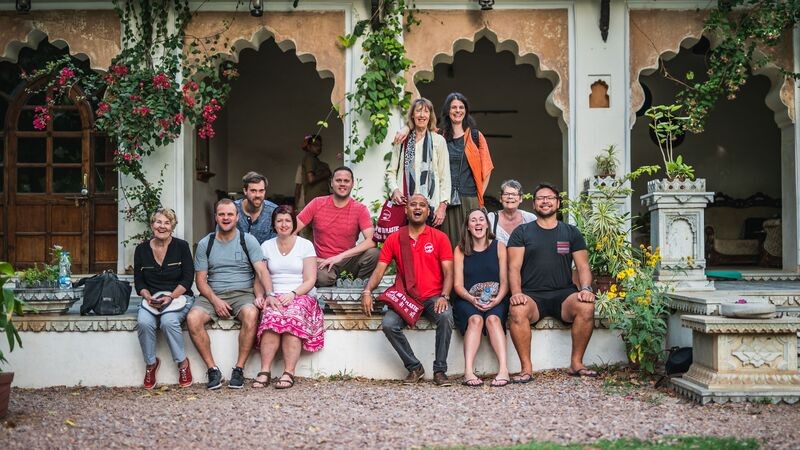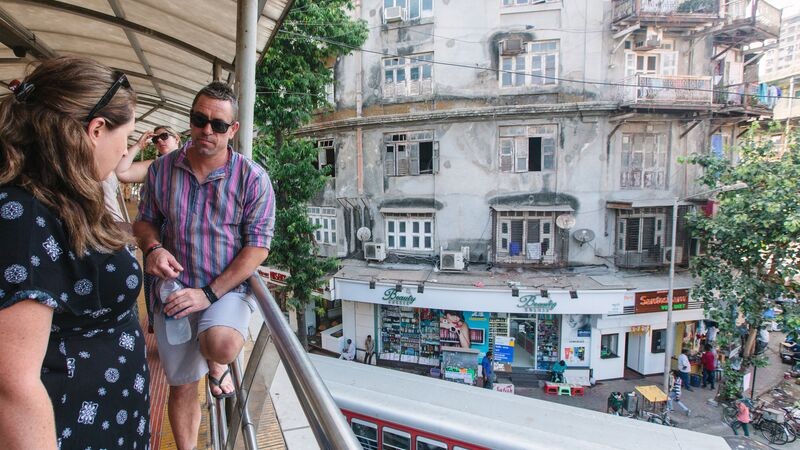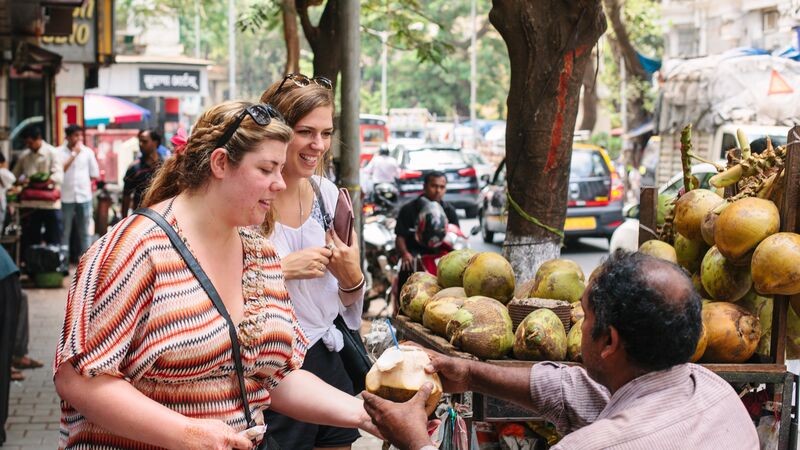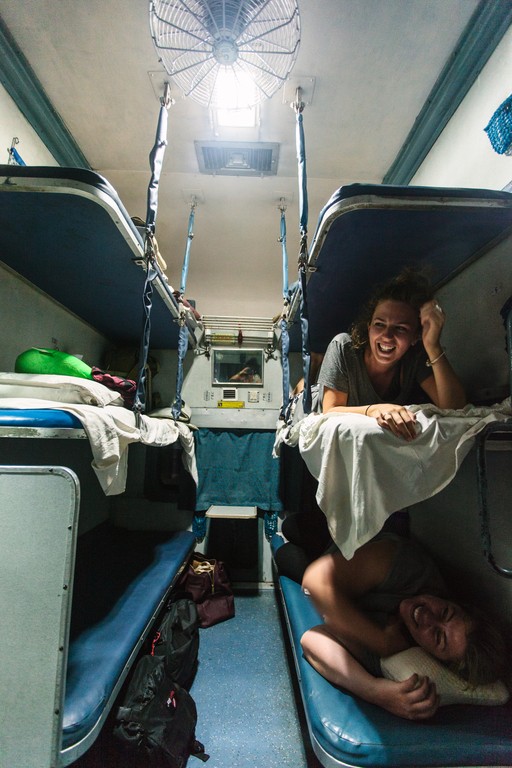Planning a trip to India? Knowing what to pack is crucial for a comfortable and enjoyable experience. SIXT.VN is here to guide you through the essentials, ensuring you’re well-prepared for the diverse climate, cultural norms, and incredible adventures that await. Let’s dive into creating the perfect travel checklist for your Indian escapade, focusing on clothing, essentials, and cultural considerations.
1. Understanding India’s Diverse Climate and Regions
What should you consider about the climate when packing for India?
India’s climate varies dramatically depending on the region and time of year, making it essential to understand these variations when deciding what to pack. The northern part of India experiences hot summers (April-June) and cool winters (November-February), while the south remains warm and humid year-round. According to the India Meteorological Department, temperatures in Rajasthan can soar to 45°C (113°F) in the summer. Coastal areas like Goa and Kerala have high humidity levels, especially during the monsoon season (June-September).
- North India: Pack light cotton clothes for summer and warm layers for winter.
- South India: Focus on lightweight, breathable fabrics suitable for humidity.
- Monsoon Season: Carry waterproof gear, including a raincoat and waterproof bags.
2. Essential Clothing Items for India Travel
What types of clothing are best suited for traveling in India?
Choosing the right clothing can greatly enhance your comfort and respect for local customs. Opt for loose-fitting, breathable fabrics like cotton and linen. According to a 2019 study by the Tourism Authority of India, dressing modestly can enrich your cultural experiences by showing respect for local traditions.
- Loose-fitting pants or skirts: These are comfortable and culturally appropriate.
- Long-sleeved shirts: Offer protection from the sun and are suitable for temples.
- T-shirts: Choose lightweight and breathable materials.
- Scarves: Versatile for covering your head in religious sites or protecting from dust.
- Sweater or light jacket: Useful for cooler evenings or air-conditioned spaces.
 Rajasthan woman in traditional clothing
Rajasthan woman in traditional clothing
3. Footwear Considerations for Indian Terrain
What kind of footwear should you pack for exploring India?
Footwear is crucial for navigating India’s diverse terrains, from bustling city streets to ancient temples. Comfortable and practical shoes are a must. According to a 2020 report by TripAdvisor, comfortable walking shoes are among the top-rated items by travelers to India.
- Comfortable walking shoes: Essential for exploring cities and historical sites.
- Sandals or flip-flops: Convenient for shorter walks and temple visits (where shoes must be removed).
- Closed-toe shoes: Provide protection in crowded areas.
- Waterproof shoes: Useful during the monsoon season.
4. Health and Hygiene Essentials
What health and hygiene items should be on your packing list for India?
Staying healthy is crucial when traveling in India. Ensure you pack essentials to prevent illness and maintain hygiene. According to the World Health Organization (WHO), travelers should be prepared with necessary medications and hygiene products.
- Hand sanitizer: Essential for maintaining hygiene on the go.
- Wet wipes: Useful for quick clean-ups.
- Insect repellent: Protects against mosquitoes and other insects.
- Sunscreen: Protects against the strong Indian sun.
- Personal medications: Carry all necessary prescriptions and over-the-counter drugs.
- Rehydration salts: Important for preventing dehydration in the hot climate.
 Travelers applying bug spray
Travelers applying bug spray
5. Essential Toiletries for India Travel
What toiletries are essential for a trip to India?
While you can purchase many toiletries in India, bringing travel-sized essentials ensures you’re covered upon arrival. Consider these must-pack items.
- Shampoo and conditioner: Travel-sized bottles to start your trip.
- Soap or body wash: Convenient for maintaining hygiene.
- Toothbrush and toothpaste: Dental hygiene is essential.
- Deodorant: Stay fresh in the warm climate.
- Dry shampoo: A lifesaver when hot water is scarce.
6. Electronics and Gadgets to Bring
Which electronics and gadgets are useful for traveling in India?
In today’s digital age, certain electronics can greatly enhance your travel experience. Be sure to pack these items.
- Portable charger: Keeps your devices powered on long journeys.
- Plug adapter: India uses Type C, D, and M plugs.
- Camera: Capture the incredible sights of India.
- Phone: For communication and navigation.
- E-reader or books: For entertainment during downtime.
7. Documents and Identification You Need
What essential documents should you carry when traveling to India?
Having the right documents is crucial for a smooth trip. Keep these items secure and accessible.
- Passport: Ensure it’s valid for at least six months beyond your travel dates.
- Visa: Required for most nationalities.
- Flight tickets: Keep a digital and printed copy.
- Travel insurance details: Important for medical emergencies.
- Copies of important documents: Store separately from the originals.
8. Cultural Sensitivity: What to Wear and How to Act
How can you dress and behave respectfully in India?
Respecting local customs is essential for a positive travel experience. Dress modestly, especially when visiting religious sites. The Ministry of Tourism emphasizes the importance of cultural sensitivity for enhancing tourist experiences.
- Dress modestly: Cover shoulders and knees when visiting temples or religious sites.
- Remove shoes: Before entering temples and some homes.
- Be respectful: Of local customs and traditions.
- Ask for permission: Before taking photos of people.
- Use your right hand: When giving or receiving items, especially food.
 Women in traditional dress in India
Women in traditional dress in India
9. Adapting to Local Customs and Etiquette
What are some important cultural etiquette tips for traveling in India?
Understanding local customs enhances your travel experience and shows respect. Here are some key etiquette tips:
- Greetings: Use “Namaste” (placing hands together and bowing slightly) as a respectful greeting.
- Public Affection: Avoid public displays of affection.
- Photography: Always ask permission before taking someone’s photo.
- Temple Visits: Dress modestly, remove shoes, and avoid pointing your feet at deities.
- Eating: Use your right hand to eat, as the left is considered unclean.
10. Packing a Train Travel Kit
What should you include in a train travel kit for India?
Traveling by train is a quintessential Indian experience. Make it more comfortable with a well-prepared train kit.
- Toilet paper: Not always available on trains.
- Hand sanitizer: For maintaining hygiene.
- Wet wipes: Useful for quick clean-ups.
- Snacks: For long journeys.
- Water bottle: Stay hydrated.
- Earplugs and eye mask: For better sleep.
- Book or entertainment: To pass the time.
 India overnight trains
India overnight trains
11. Creating a Basic First-Aid Kit
What should you include in a first-aid kit for travel in India?
A basic first-aid kit can help you handle minor health issues while traveling. Essential items include:
- Band-aids: For minor cuts and scrapes.
- Antiseptic wipes: To clean wounds.
- Pain relievers: For headaches and minor aches.
- Anti-diarrheal medication: To combat traveler’s diarrhea.
- Motion sickness pills: If you are prone to motion sickness.
- Antihistamines: For allergies.
- Any personal prescriptions: Make sure to have enough for the duration of your trip.
12. Budgeting for Your Trip to India
How should you budget for a trip to India, and what expenses should you consider?
Budgeting for your trip ensures you can enjoy your travels without financial stress. Consider these expenses:
- Accommodation: Ranges from budget hostels to luxury hotels.
- Transportation: Trains, buses, taxis, and tuk-tuks.
- Food: Affordable street food to high-end restaurants.
- Activities and entrance fees: Temples, monuments, and tours.
- Shopping: Souvenirs, clothing, and local crafts.
- Visa fees: Varies by nationality.
- Travel insurance: Essential for unexpected events.
13. Understanding Currency and Payment Methods
What currency is used in India, and what payment methods are accepted?
Knowing how to handle money in India is essential. The local currency is the Indian Rupee (INR).
- Currency: Indian Rupee (INR).
- Payment Methods:
- Cash: Widely used, especially in smaller towns and markets.
- Credit/Debit Cards: Accepted in larger establishments and cities.
- UPI (Unified Payments Interface): Popular mobile payment system in India.
- ATMs: Widely available in cities for cash withdrawals.
- Exchange Rates: Check current exchange rates before your trip.
14. Communication Tips for Travelers
How can you communicate effectively in India, even if you don’t speak Hindi?
While Hindi is the official language, English is widely spoken, especially in tourist areas.
- Learn Basic Phrases: Knowing a few Hindi phrases can be helpful and appreciated.
- English: Widely spoken in tourist areas.
- Translation Apps: Use apps like Google Translate for communication.
- Local SIM Card: Consider purchasing a local SIM card for easy communication and data access.
15. Essential Apps for Traveling in India
What apps can make your travel experience in India easier and more enjoyable?
Several apps can enhance your travel experience:
- Google Maps: For navigation.
- Uber/Ola: Ride-sharing apps for convenient transportation.
- IRCTC Rail Connect: For booking train tickets.
- Zomato/Swiggy: For finding restaurants and ordering food.
- Google Translate: For language translation.
16. Safety Tips for a Smooth Trip
What safety precautions should you take while traveling in India?
Ensuring your safety is paramount. Here are some tips:
- Stay Aware: Be vigilant in crowded areas.
- Secure Your Belongings: Use a money belt or hidden pouch for valuables.
- Trust Your Instincts: Avoid walking alone at night in unfamiliar areas.
- Use Reputable Transportation: Stick to registered taxis and ride-sharing services.
- Stay Hydrated: Drink plenty of bottled water to avoid dehydration.
- Inform Someone: Keep family or friends updated on your itinerary.
17. Transportation Options within India
What are the best ways to get around in India, and what should you know about each option?
India offers various transportation options to suit different budgets and preferences.
- Trains: The most common and efficient way to travel long distances.
- Buses: Affordable but can be crowded and time-consuming.
- Taxis and Auto-rickshaws: Convenient for short distances within cities.
- Metro Systems: Available in major cities like Delhi, Mumbai, and Kolkata.
- Domestic Flights: Save time on long-distance travel.
18. Must-Try Foods and Drinks in India
What are some culinary highlights you should try during your visit to India?
Indian cuisine is diverse and flavorful. Be sure to try these local favorites:
- Biryani: A flavorful rice dish with meat or vegetables.
- Masala Dosa: A crispy crepe filled with spiced potatoes.
- Butter Chicken: A creamy tomato-based chicken curry.
- Thali: A platter with a variety of dishes.
- Chai: Spiced tea, a staple in India.
- Street Food: Explore local street food, but ensure it is from a reputable vendor.
19. Shopping for Souvenirs and Local Crafts
What are the best souvenirs to buy in India, and where can you find them?
India offers a plethora of unique souvenirs and local crafts.
- Textiles: Silk scarves, pashminas, and embroidered fabrics.
- Handicrafts: Wooden carvings, pottery, and metalwork.
- Jewelry: Silver, gold, and gemstone jewelry.
- Spices: Aromatic Indian spices.
- Tea: Assam, Darjeeling, and other regional teas.
- Markets: Visit local markets like Delhi’s Chandni Chowk and Jaipur’s Johari Bazaar.
20. Travel Insurance: Why It’s Essential
Why is travel insurance important for a trip to India, and what should it cover?
Travel insurance is crucial for a worry-free trip. It should cover:
- Medical Expenses: For illness or injury.
- Trip Cancellation/Interruption: For unexpected changes to your travel plans.
- Lost or Stolen Belongings: Coverage for lost luggage or personal items.
- Emergency Evacuation: In case of a serious medical emergency.
- Personal Liability: Protection if you are responsible for causing injury or damage to someone else.
21. Handling Potential Culture Shock
How can you prepare for and handle culture shock when traveling in India?
Culture shock is a common experience when traveling to a new country.
- Research: Learn about Indian customs and traditions.
- Be Open-Minded: Embrace new experiences and perspectives.
- Stay Connected: Keep in touch with family and friends.
- Take Breaks: Allow yourself downtime to relax and recharge.
- Seek Support: Talk to other travelers or locals if you’re feeling overwhelmed.
22. Staying Hydrated and Avoiding Dehydration
What are the best ways to stay hydrated in India’s climate?
Staying hydrated is essential, especially in the hot climate.
- Drink Bottled Water: Ensure the seal is intact.
- Avoid Tap Water: Unless it has been properly boiled or filtered.
- Carry a Water Bottle: Refill it at safe water sources.
- Drink Electrolyte Solutions: To replenish lost minerals.
- Avoid Excessive Caffeine and Alcohol: These can dehydrate you.
23. Managing Delhi Belly and Food Safety
How can you avoid traveler’s diarrhea (Delhi Belly) and ensure food safety in India?
Traveler’s diarrhea is a common concern, but these tips can help:
- Eat at Reputable Places: Choose restaurants with good hygiene practices.
- Avoid Street Food: Unless it is freshly cooked and served hot.
- Wash Your Hands: Frequently with soap and water.
- Drink Bottled Water: Avoid ice in drinks.
- Peel Fruits and Vegetables: Before eating.
24. Staying Connected with Local SIM Card
What are the benefits of using a local SIM card in India, and how can you get one?
A local SIM card provides affordable data and communication.
- Benefits:
- Affordable Data: For maps, translation apps, and staying connected.
- Local Calls: For easy communication within India.
- How to Get One:
- Purchase at the Airport: Upon arrival.
- Visit a Local Mobile Store: Provide your passport and visa for verification.
- Choose a Plan: Select a prepaid plan that suits your needs.
25. Understanding Power Plugs and Voltage
What type of power plugs are used in India, and what voltage should you be aware of?
Knowing the power plug and voltage standards is essential for charging your devices.
- Power Plugs: Type C, D, and M.
- Voltage: 230V, 50Hz.
- Adapter: Bring a universal adapter for your devices.
- Voltage Converter: If your devices are not compatible with 230V, use a voltage converter.
26. How to Bargain Effectively in Markets
What are some tips for bargaining successfully in Indian markets?
Bargaining is common in Indian markets.
- Start Low: Offer a price well below the asking price.
- Be Polite: Bargain with a smile and friendly attitude.
- Know the Value: Research the average price of the item beforehand.
- Be Willing to Walk Away: If the seller doesn’t agree to your price.
- Bundle Purchases: You might get a better deal if you buy multiple items.
27. Finding Accommodation That Suits Your Needs
What types of accommodation are available in India, and how can you find the best options?
India offers a wide range of accommodation options.
- Hostels: Budget-friendly, good for meeting other travelers.
- Guesthouses: Affordable, often family-run.
- Hotels: Range from budget to luxury.
- Homestays: Authentic cultural experience.
- Booking Platforms: Use sites like Booking.com, Airbnb, and MakeMyTrip.
28. Tips for Solo Female Travelers
What safety and practical tips should solo female travelers consider when visiting India?
Solo female travel in India can be safe and rewarding with the right precautions.
- Research and Plan: Know your itinerary and accommodation details.
- Dress Modestly: Avoid drawing unnecessary attention.
- Trust Your Instincts: If a situation feels unsafe, leave immediately.
- Use Reputable Transportation: Stick to registered taxis and ride-sharing services.
- Share Your Itinerary: Keep family or friends updated on your plans.
- Stay in Well-Reviewed Accommodation: Read reviews from other female travelers.
29. Staying Fit and Active During Your Trip
How can you maintain your fitness routine while traveling in India?
Staying active can enhance your travel experience.
- Walking: Explore cities and historical sites on foot.
- Yoga: Participate in yoga classes or practice on your own.
- Gyms: Many hotels have fitness centers.
- Outdoor Activities: Hiking, trekking, and water sports.
- Pack Light Workout Gear: Bring comfortable clothes and shoes.
30. Essential Phrases to Learn in Hindi
What basic Hindi phrases should you learn before traveling to India?
Knowing a few Hindi phrases can be helpful and appreciated.
- Namaste: Hello/Goodbye
- Shukriya: Thank you
- Kitna Hai?: How much?
- Haan: Yes
- Nahi: No
- Theek Hai: Okay/Alright
- Kripya: Please
- Maaf Kijiye: Excuse me/Sorry
By packing wisely and being aware of local customs, you’ll be well-prepared to enjoy the incredible experiences India has to offer.
Ready to embark on your Indian adventure? Let SIXT.VN take the stress out of planning with our comprehensive travel services. From airport transfers and hotel bookings to curated tour packages, we ensure a seamless and unforgettable journey.
Contact us today:
- Address: 260 Cau Giay, Hanoi, Vietnam
- Hotline/Whatsapp: +84 986 244 358
- Website: SIXT.VN
FAQ: What to Pack When Traveling to India
1. What are the most important clothing items to pack for India?
The most important clothing items to pack for India include loose-fitting pants or skirts, long-sleeved shirts, breathable t-shirts, scarves, and a light jacket or sweater. These items will help you stay comfortable and respect local customs.
2. What type of shoes should I bring for traveling in India?
You should bring comfortable walking shoes for exploring cities and historical sites, sandals or flip-flops for shorter walks and temple visits, and closed-toe shoes for added protection in crowded areas.
3. What health and hygiene essentials should I pack for a trip to India?
Essential health and hygiene items include hand sanitizer, wet wipes, insect repellent, sunscreen, personal medications, and rehydration salts. These items will help you stay healthy and comfortable during your trip.
4. Are there any specific cultural considerations for dressing in India?
Yes, it’s important to dress modestly, especially when visiting religious sites. This means covering your shoulders and knees. It is also respectful to remove your shoes before entering temples and some homes.
5. What electronics and gadgets are useful for traveling in India?
Useful electronics and gadgets include a portable charger, plug adapter, camera, phone, and e-reader or books. These items will help you stay connected and entertained during your travels.
6. How can I stay safe while traveling in India?
To stay safe, be vigilant in crowded areas, secure your belongings, trust your instincts, use reputable transportation, stay hydrated, and keep family or friends updated on your itinerary.
7. What are some must-try foods and drinks in India?
Some must-try foods and drinks include biryani, masala dosa, butter chicken, thali, and chai. Exploring local street food can also be a great experience, but make sure to choose vendors with good hygiene practices.
8. Is it necessary to purchase a local SIM card when traveling in India?
While not necessary, purchasing a local SIM card can provide affordable data and communication. This can be particularly useful for navigation, translation apps, and staying connected with family and friends.
9. How can I effectively bargain in Indian markets?
To bargain effectively, start with a low offer, be polite, know the value of the item, be willing to walk away, and consider bundling purchases for a better deal.
10. What should my travel insurance cover for a trip to India?
Your travel insurance should cover medical expenses, trip cancellation or interruption, lost or stolen belongings, emergency evacuation, and personal liability to ensure a worry-free trip.



